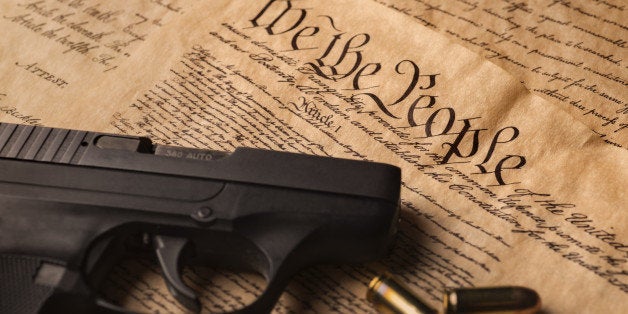
There has been a resurgence of discussion about gun violence prevention in the wake of the mass shooting in Orlando. For those who may be less familiar with some of the gun terms used, and the legal principles at the heart of the discussion, here is a summary of ten basic and important facts:
1. An "automatic" weapon is one in which a single trigger pull can release more than one shot (think "machine gun"). Contrary to popular belief, automatic weapons are not illegal in the United States but they are heavily regulated and, accordingly, their use is generally confined to police and military.
2. A "semi-automatic" weapon is one in which a single trigger pull releases a single shot; however, the weapon then automatically ejects the cartridge and reloads a new one.
3. Semi-automatic weapons utilize a "magazine," which is an ammunition storage and feeding device. The capacity of a gun "magazine" is the amount of ammunition or rounds that can be fired before stopping and reloading the gun. Some magazines hold just a few rounds while some can hold up to 100 rounds. There is no single definition of a "high-capacity magazine" but some legislation has defined it as a magazine that holds more than 10 rounds. Both handguns and rifles can have high-capacity magazines.
4. The term "assault weapon" does not have a standard meaning. However, it generally refers to an automatic weapon or a semi-automatic weapon with a large capacity magazine. Note that an assault weapon can be a pistol or handgun, as well as a rifle.
5. On September 13, 1994, Congress passed, and President Clinton signed, an "assault weapons ban," which applied to certain semi-automatic weapons and high-capacity magazines. However, the ban only applied to weapons manufactured after the date of the law's enactment, and it expired on September 13, 2004, in accordance with its sunset provision. Multiple efforts to renew the ban have failed.
6. Gun safety laws vary substantially state by state. For example, New York, Massachusetts, California, and New Jersey have among the strictest gun laws. In contrast, certain states, including Alaska, Arizona, Idaho, Kansas, Maine, Mississippi, Puerto Rico, Vermont, West Virginia, and Wyoming, do not even require a permit for adults (generally 21 and older) to carry a concealed firearm or openly carry (provided the person is not otherwise prohibited from owning a firearm). Sometimes those latter jurisdictions are referred to as "Constitutional Carry" jurisdictions in that they take the view that the right to carry weapons is inherent in the Constitution and, accordingly, should not be conferred by government via a permit.
7. During the 2011 shooting in Tucson, Arizona, involving Rep. Gabrielle Giffords, the gunman was overpowered and stopped when he had to pause firing in order to change the 31 round, high-capacity magazine on his Glock pistol. In 2012, the Aurora, Colorado shooter used a 100-round magazine, but it jammed before all of those rounds could be discharged. High-capacity magazines were also used in the Sandy Hook and Orlando attacks.
8. The Second Amendment of the U.S. Constitution reads: "A well regulated Militia, being necessary to the security of a free State, the right of the people to keep and bear Arms, shall not be infringed." The Second Amendment was adopted in 1791. At the time of the adoption of the Second Amendment, there were no automatic or semi-automatic weapons, or high-capacity magazines.
9. District of Columbia v. Heller (2008) is a landmark United States Supreme Court case that concerned regulation of handguns (the Heller opinion did not address the issue of high-capacity magazines). In a 5-4 decision, with the majority opinion written by Justice Antonin Scalia, the Court held that the Second Amendment protects an individual right to possess and carry firearms. The Heller majority found that the language of the first clause of the Second Amendment, "[a] well regulated Militia, being necessary to the security of a free State," merely sets forth a purpose and does not limit the later or "operative" language of the amendment, "the right of the people to keep and bear Arms, shall not be infringed."
10. However, the Heller opinion expressly states that the right to keep and bear arms, like most constitutional rights, is not unlimited. The Second Amendment, said the Heller majority, is "not a right to keep and carry any weapon whatsoever in any manner whatsoever and for whatever purpose." The Court noted, in particular, that "dangerous and unusual" weapons would properly be subject to regulation but it did not define, and has not defined, which weapons might be included in that category. Specifically, the Court has not yet commented on the regulation of semi-automatic weapons or high-capacity magazines. At some point, in the near future, the Supreme Court will likely consider how ownership, use, and regulation of semi-automatic weapons and high-capacity magazines square with the Second Amendment.
